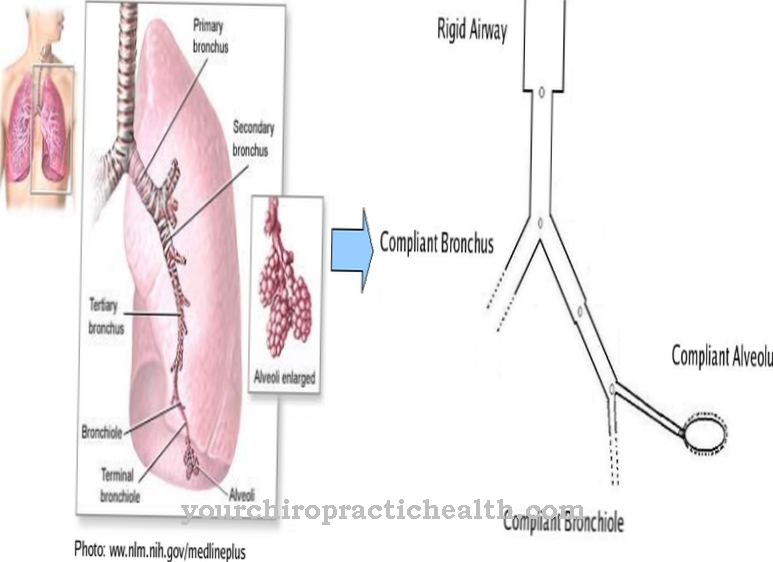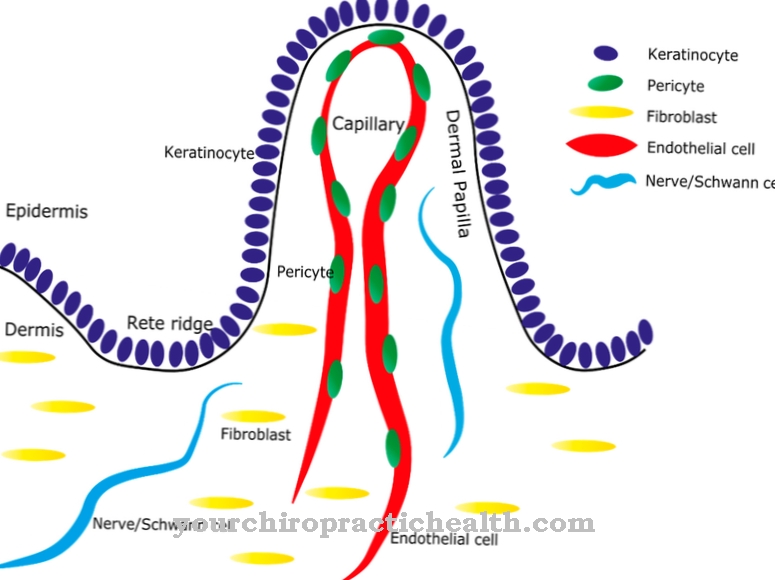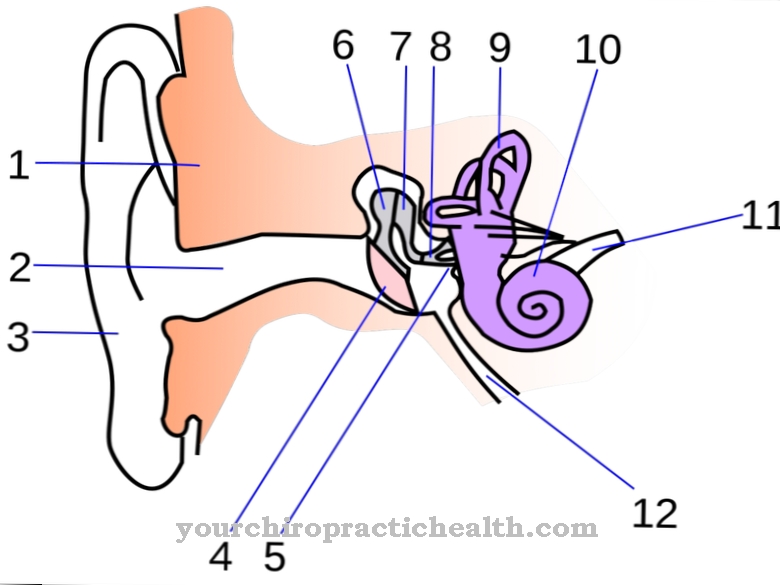Under the Tympanic cavity the medical professional understands a cavity in the middle ear in which the ossicles are housed. In addition to the hearing process, the tympanic cavity is involved in middle ear ventilation and pressure equalization. The tympanic effusion is the best known complaint in connection with the tympanic cavity.
What is the tympanic cavity?
The tympanic cavity is a part of the middle ear. It is a cavity system with six different walls. This cavity system is particularly relevant for ventilation, sound reinforcement and pressure equalization. The tympanic cavity begins immediately behind the eardrum and consists of the tympani dome, the middle room and the tympanic chamber. The central area forms the largest part and is directly adjacent to the eardrum.
The so-called oval window connects the tympanic cavity with the cochlea of the inner ear. The ossicles are also housed in the structure of the tympanic cavity. The anvil and hammer sit in the dome of the structure, where the hammer is attached to the eardrum and is articulated with the anvil and stapes. With a length of around twelve to 15 millimeters, the tympanic cavity is around three to seven millimeters wide. The internal volume is around one cubic centimeter.
Anatomy & structure
The tympanic cavity has a total of six walls. From the cavity system, there are mainly connections to the nasopharynx and the inner ear through various windows and junctions. In the upper part of the tympanic cavity there is an access to the skull bone. The upper boundary of the tympanic cavity is a thin plate of bone, which is also called the tympanic roof. The internal carotid artery runs in the anterior wall of the middle part of the tympanic cavity.
The eardrum muscle is also located in this area. The auditory tuba, which connects the tympanic cavity with the nasopharynx, also flows into the same wall. The side wall of the tympanic cavity forms the eardrum itself. A nerve branch crosses here, which is also known as the drum string. The arched middle wall of the tympanic cavity separates the cavity structure from the inner ear. The posterior wall forms the boundary to the mastoid process of the cranial bone cavities.
Four arteries supply the tympanic cavity and flow into lymph and nerve structures. For the most part, the tympanic cavity is lined with a thin mucous membrane. This mucous membrane consists of an isoprismatic epithelium with mucus-producing goblet cells. In the area of the ossicles, this layer turns into a thick squamous epithelium.
Function & tasks
Since the tympanic cavity is a cavity system, this anatomical structure is permanently filled with air. The entire middle ear is ventilated via the air-filled cavity system. In addition, the tympanic cavity is used to functionally accommodate the ossicles, hammer, anvil and stirrup. These bones are connected to each other and together amplify all acoustic signals.
This only enables the hearing impression as the person knows it. The membrane of the tympanic cavity is able to vibrate for the sake of the bones. If the eardrum starts to vibrate, for example due to sound, this is transferred to the hammer that has grown. The hammer transmits the vibrations to the anvil and the stapes. From these two ossicles, the sound is conducted into the inner ear. This transmission takes place through the oval window in the tympanic cavity. The tympanic cavity is therefore significantly involved in the hearing process. The cavity system is also an instance of pressure equalization due to the confluent tuba auditiva, which mainly takes place via the nasopharynx.
Pressure equalization is particularly relevant in situations under water or at greater heights. If large height or pressure differences are overcome in a very short time, there is a pressure gradient between the external auditory canal and the tympanic cavity. The eardrum is then pressed into the cavity system. The pressure equalization via the auditory tuba ensures the intactness of the eardrum in such situations, but also fluid is drained from the middle ear through the auditory tuba.
You can find your medication here
➔ Medicines for ear complaints and hearing problemsDiseases
The so-called tympanic effusion is one of the most common diseases of the tympanic cavity. This phenomenon is usually the result of a cold with a respiratory infection, but allergies can also trigger an effusion. As a rule, a purulent otitis media occurs as part of a tympanic effusion. The auditory tuba swells up and hardly allows any more air to enter the tympanic cavity.
Ventilation of the middle ear is no longer possible. A high pressure is created in the tympanic cavity and fluid builds up. As a result, the eardrum bulges inward. Usually there is also a hearing loss. Tympanic sinus effusions can lead to chronic otitis media. After an otoscope, the doctor usually treats a tympanic effusion with medication. A rarer disease of the middle ear, but all the more serious, is chronic bone suppuration. In this disease, the middle ear is permanently under pressure due to an air supply disorder.
The eardrum is drawn into the middle ear and the chain of ossicles in the tympanic cavity is damaged. The skin of the external auditory canal comes into contact with the mucous membrane of the middle ear and the ossicles slowly degrade as part of an aggressive inflammation. So-called otosclerosis can also degrade the ossicles of the tympanic cavity and promote deafness. Sometimes, however, paralysis of the facial nerve also becomes noticeable as a middle ear complaint, since the facial nerve flows into the tympanic cavity there.












.jpg)



.jpg)










.jpg)
